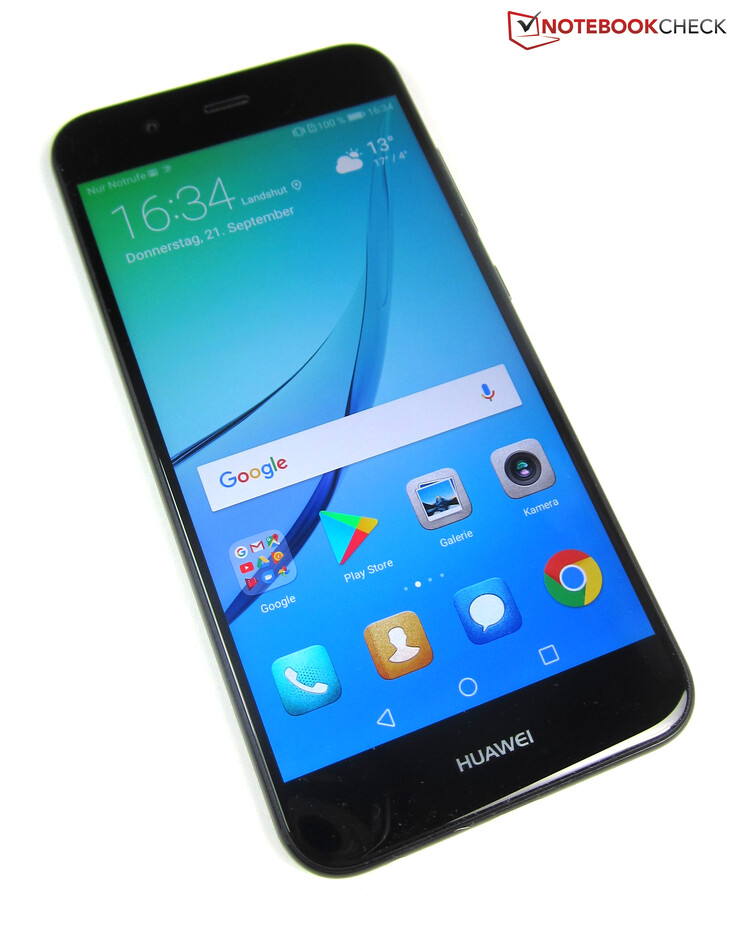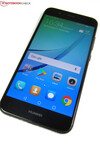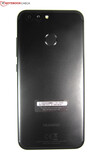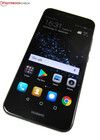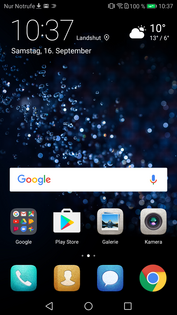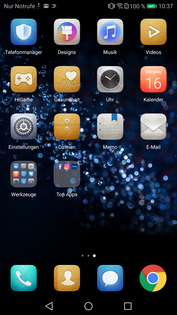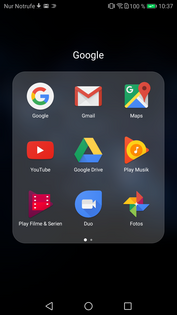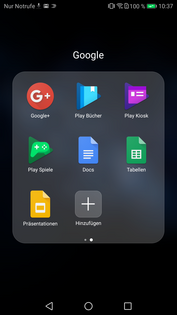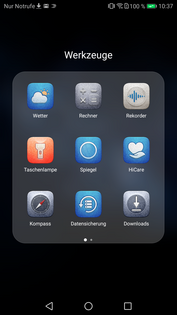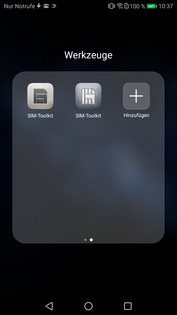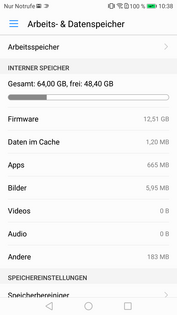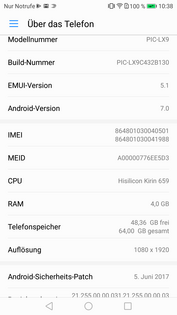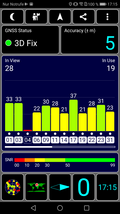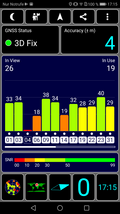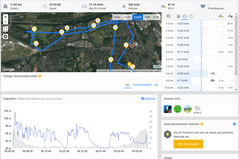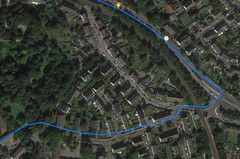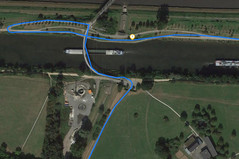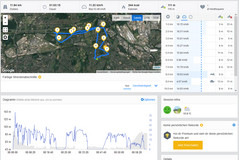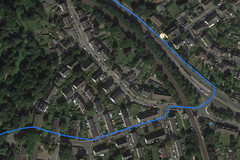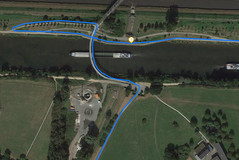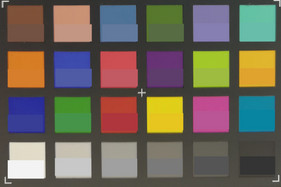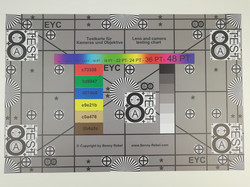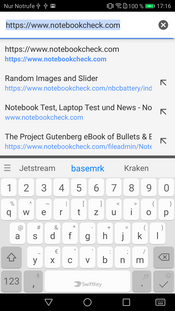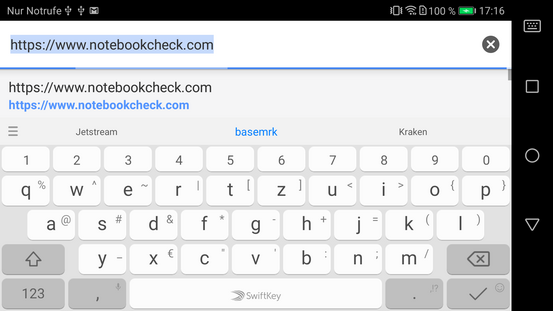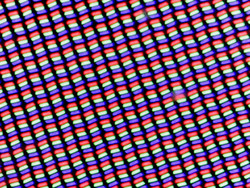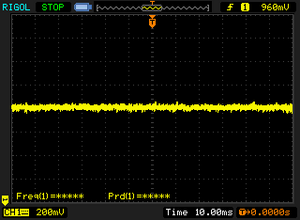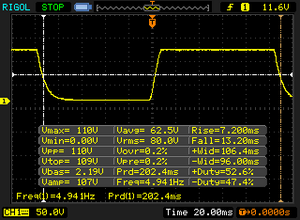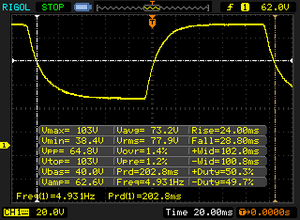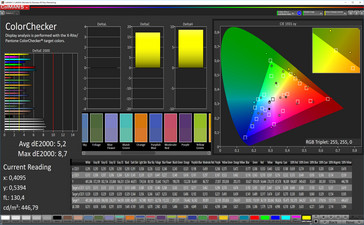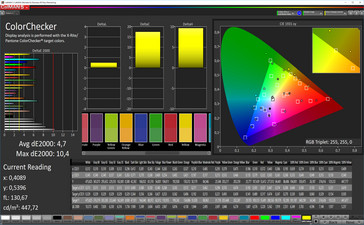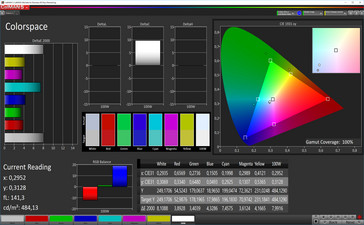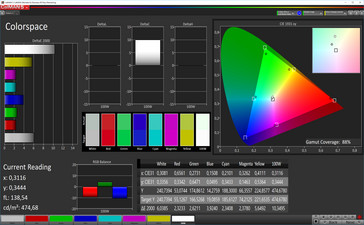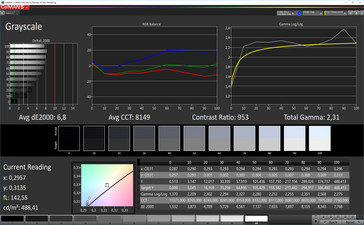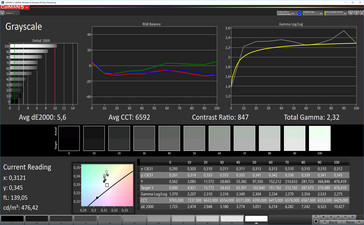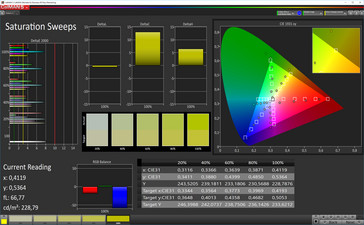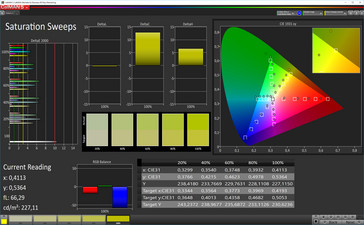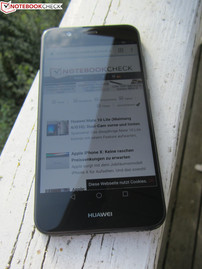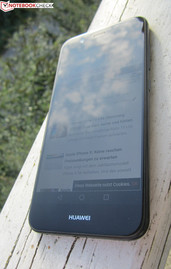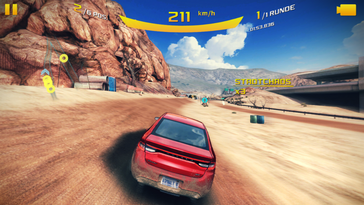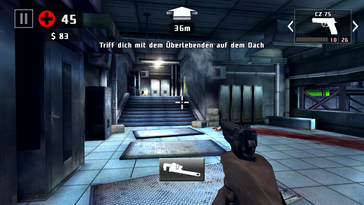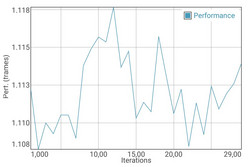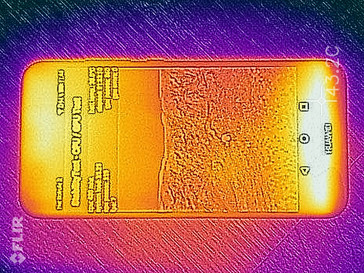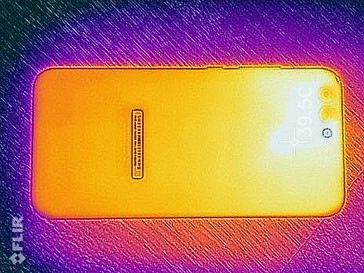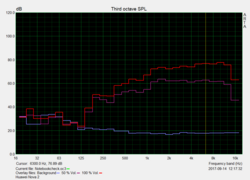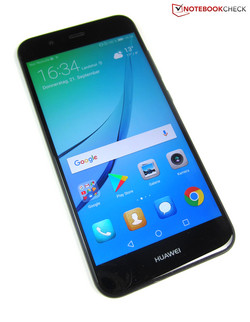Huawei Nova 2 Smartphone Review

For the original German review, see here.
Those who are not hunting for the ultimate smartphone bargain or willing to spend 600 Euros ($704) or more for a premium model will find many interesting contenders in the mid-range category. One of them is the Huawei Nova 2. While it is already priced at the upper limit of this category at 399 Euros (~$468), it certainly delivers in terms of features.
The Nova 2 features a stylish aluminum case, which obviously looks similar to the Apple iPhone, while it does not imitate every detail. For example, the 5-inch Huawei has the fingerprint sensor on the rear. Hence it can be easily reached with the index finger. The 2.5D display on the front features a Full HD resolution and 443 PPI. The Nova 2 is powered by a fast HiSilicon Kirin 659 octa core SoC and 4 GB of RAM. Thanks to a storage capacity of 64 GB you will not run out of storage space quickly. According to the manufacturer, the camera is the actual highlight. The front camera features a high resolution of 20 MP, which is significantly higher than the rear camera's 12 MP. It is supposed to make selfie fans happy.
The Huawei Nova 2 has strong competitors, which are at least on par with it in terms of features and performance: The rivals which we compare the Nova 2 to in our review are the BQ Aquaris X Pro, the Honor 9, the HTC U Ultra, the Huawei P9 Plus, and the LG G6.
Case
Huawei has equipped the 143 g (~5 oz) light Nova 2 with an aluminum case, which is visually and haptically embellished with a piano finish on the sides. Moreover, the rounded corners and edges as well as the matte rear cover, which ensures secure grip with a slightly roughened surface, feel good to the touch. The fingerprint sensor on the rear is slightly recessed. Hence, it is easily discernible by touch. Huawei has incorporated the 2.5D glass into the case without any visible inaccuracy. The stability is also good. We even failed to twist the smartphone by applying high force. Only the display showed minimal waves, which disappeared as quickly as they appeared.
Huawei offers the Nova 2 in three colors: Graphite Black, Prestige Gold, and Aurora Blue.
Connectivity
The Huawei Nova 2 is equipped with a HiSilicon Kirin 659. The ARM based octa core SoC features Cortex A53 cores in two clusters with a maximum clock rate of 1.7 GHz and 2.36 GHz, respectively. Graphics rendering is done by an ARM Mali-T830 MP2. Moreover, the phone is generously equipped in terms of storage with 4 GB of RAM and 64 GB of internal storage.
Unfortunately, Android 7.0 and EMUI 5.1 require relatively large amounts of storage space. The combination of these with the user interface developed by Huawei results in the Nova 2's ROM taking up almost 16 GB. Hence, only 48 GB is free. While this is not little, 64 GB competitors show that it could be better. For example the BQ Aquaris X Pro and the HTC U Ultra have 54 GB free storage each, and the Honor 9 provides 50 GB at least. The storage capacity of the Huawei Nova 2 can be expanded by up to 128 GB with microSD cards, which can be used to store media files. The hybrid slot can only be used for a nano SIM card in this case. The USB Type-C port supports only USB-2.0 speed, but is capable of USB OTG. Hence, you can connect USB drives and other peripherals to it.
Software
The Huawei Nova 2 runs Android 7.0 Nougat and the proprietary EMUI 5.1 user interface. At the time of testing, Android security patches as of 06-05-2017 were installed, which are already no longer up-to-date.
Although the firmware takes up quite a lot of space on the smartphone with almost 16 GB, which might primarily be due to the EMUI interface, there are hardly any software extras included. Apart from the mandatory Google apps, Huawei has pre-installed only a few tools, for example a data backup app, a SIM toolkit, and the HiCare service app. Among others, the latter provides access to the service center of the manufacturer and Huawei's forum. Moreover, guides and tips regarding use of the phone are available through the app. Some of the pre-installed apps can be uninstalled, but not all. For example, the Google apps and HiCare can only be deactivated. When the smartphone is connected to a PC, the HiSuite software is available through a virtual drive. Among others, it can be used for running updates and backups.
Communication and GPS
The Huawei Nova 2 communicates via GSM quad band (850, 900, 1.800, 1.900 MHz), UMTS quad band (800, 850, 900, 2.100 MHz), and LTE Cat.6 (800, 850, 900, 1800, 2100, 2600 MHz) in the mobile telephone network. Downloads are possible with 300 MBit/s, the maximum upload rate is 50 MBit/s. During our time with the phone, reception worked flawlessly in the Vodafone network in the countryside.
However, the Wi-Fi performance of the Nova 2 is poor: With 802.11 b/g/n, not only does the smartphone lack the fast 802.11-ac standard, but also support of the 5 GHz band. As a result, the Huawei can only use the slow 2.4 GHz Wi-Fi. In view of its potential, it performs very well here. The Nova 2 reaches up to 75 MBit/s when exchanging data with our Linksys EA8500 reference router. The ac competition is at least twice as fast and is led by the LG G6, which achieves a maximum of 325 MBit/s.
| Networking | |
| iperf3 transmit AX12 | |
| HTC U Ultra | |
| LG G6 | |
| BQ Aquaris X Pro | |
| Honor 9 | |
| Huawei Nova 2 | |
| Huawei Nova | |
| iperf3 receive AX12 | |
| LG G6 | |
| Honor 9 | |
| HTC U Ultra | |
| BQ Aquaris X Pro | |
| Huawei Nova 2 | |
| Huawei Nova | |
The GPS module of the Nova 2 works fast and geolocates with an accuracy of up to 4 meters (~13 ft) outdoors. The accuracy is almost just as high indoors (5 meters/~16 ft). Moreover, the smartphone achieved the same accuracy on our 12 km (~7.5 mi) long bike test route. The Nova 2 performs only marginally worse than the professional navigation device Garmin Edge 500. While the smartphone deviates a few meters here and there from the ideal in the route, the deviations from the reference device are only very small overall. The total deviation on the whole route is only 10 meters (~33 ft). Thus, the Huawei Nova 2 performs more than adequately in geolocation for everyday tasks.
Telephone Functions and Voice Quality
Apart from good frequency coverage, the Nova 2 also convinces in voice quality. During test calls to fixed and mobile phone networks, the voices of our partners sounded natural via speaker and the included headset without distortions. Moreover, the volume can be turned up very high without distortions. When hands-free communication is enabled, both sides have to listen slightly more carefully. Voices sounded slightly tinny here, but effortless communication was still possible.
Cameras
The selfie camera shoots portraits with a resolution of 20 MP (up to 5120x3840 pixels). While shots have a good quality, they are not as outstanding as you might expect in view of the high mega pixel count. You do not even have to look very closely in order to notice significant blurring and image artifacts in 1:1 images. Selfie fans will not mind this, since beauty and bokeh mode are available for fiddling about. Moreover, you can record Full HD videos with 30 FPS in decent quality. However, a 20 MP resolution is really unnecessary - a lower number of mega pixels would have also been okay.
A 12 MP camera with dual lens, LED flash and f/1.8 aperture sits on the rear of the Nova 2. Its maximum resolution is 3968x2976 pixels (4:3 format). In 16:9 format, the resolution falls to 9 MP or 3968x2440 pixels.
Huawei has packed many features into the camera app. The rear camera has more features available, primarily recording modes such as HDR and night. Depth of field and beauty mode of the selfie camera can also be selected here. Furthermore, a manual mode is also available: If you select "professional photo", you can adjust parameters such as exposure time and sensitivity. If you are not sure what each mode is good for, you can click on an info icon on the top right of the display and will get a short explanation in transparent letters. It is also handy that the menu covers recording aids such as smile recognition, a timer, and an audio release, which is triggered by either the word "cheese" or a minimum volume.
The 12-MP camera shoots good images, which appear very vibrant, thanks to the high contrast. Due to high sharpening, images appear slightly unnatural however. Moreover, the camera software does a bit too much on homogeneous image parts. Hence, fine details are lost. Poor ambient light is not a problem for the light sensitive lens. However, the peculiarities of the camera get more obvious in this scenario. Moreover, low-light images show quite a visible noise.
Finally, we want to check how the camera of the Nova 2 performs under controlled light conditions. As the ColorChecker figure shows, most, but not all colors are over-saturated. The phone creates sharp images without problems. However, it suffers from aggressive sharpening, which shows in the form of hard transitions between image structures and the fonts.
Accessories and Warranty
Huawei includes a modular power adapter, a USB Type-C cable, a headset, a protective sleeve, a SIM tool and a quick start guide. The manufacturer does not offer accessories for its smartphone on its web page.
Huawei offers a 24-month warranty on the Nova 2. The warranty is for only 6 months on the battery and the power adapter, and 3 months for the headset. Please see our Guarantees, Return Policies & Warranties FAQ for country-specific information.
Input Devices and Handling
The touchscreen of the Huawei Nova 2 feels very good to the touch and accurately responds to commands up to the corners. Furthermore, it features handy extras such as one-handed operation and pocket mode. The latter prevents the smartphone getting activated accidentally when carrying it in pockets or bags. You can enable a glove mode, which allows using the Nova 2 in winter or cold weather without frozen fingers. The fingerprint reader on the back can be used in a versatile way: As a security feature, it can unlock the display, allow access to locked apps, and serve as a safe for secure payments. In addition, pressing the fingerprint reader can accept calls, stop the alarm, display the notification field or even record images or videos.
The Nova 2 uses the well-known SwiftKey keyboard by default. It can be replaced easily. You can find many alternatives in Google's App Store, for example Google's GBoard.
Display
The 5-inch IPS display features Full HD resolution of 1920x1080 pixels, which gives an impressive pixel density of 443 PPI. The display is quite bright with an average of 487.4 cd/m² when displaying a purely white background. The brightness sensor, which is enabled by default, automatically adjusts the brightness to the ambient light, which protects the user's eyes. The same is true when the blue filter is enabled. With an even distribution of bright and dark images parts (APL 50), the brightness falls only marginally (470 cd/m²).
The display's extremely even brightness distribution of 97% is noticeable. Thanks to it, even large homogeneous color parts do not look uneven. The black value of 0.48 is decent for an IPS display. The same is true for the contrast ratio of 1002:1. The LG G6 proves that an IPS display can perform significantly better with a huge contrast ratio of 2809:1 and brightness higher than 600 cd/m². Moreover, the Nova 2 cannot keep up with the very good display results of the HTC U Ultra.
| |||||||||||||||||||||||||
Brightness Distribution: 97 %
Center on Battery: 481 cd/m²
Contrast: 1002:1 (Black: 0.48 cd/m²)
ΔE ColorChecker Calman: 5.2 | ∀{0.5-29.43 Ø4.77}
ΔE Greyscale Calman: 6.8 | ∀{0.09-98 Ø5}
Gamma: 2.31
CCT: 8149 K
| Huawei Nova 2 IPS, 1920x1080, 5" | BQ Aquaris X Pro IPS, 1920x1080, 5.2" | Honor 9 IPS/LTPS, 1920x1080, 5.2" | HTC U Ultra SLCD 5, 2560x1440, 5.7" | Huawei P9 Plus AMOLED, 1920x1080, 5.5" | LG G6 IPS LCD, 2880x1440, 5.7" | Huawei Nova IPS, 1920x1080, 5" | |
|---|---|---|---|---|---|---|---|
| Screen | -24% | 24% | 12% | -9% | 39% | 13% | |
| Brightness middle (cd/m²) | 481 | 458 -5% | 550 14% | 470 -2% | 361 -25% | 646 34% | 493 2% |
| Brightness (cd/m²) | 487 | 473 -3% | 535 10% | 445 -9% | 366 -25% | 611 25% | 485 0% |
| Brightness Distribution (%) | 97 | 88 -9% | 92 -5% | 88 -9% | 87 -10% | 89 -8% | 94 -3% |
| Black Level * (cd/m²) | 0.48 | 0.51 -6% | 0.42 12% | 0.22 54% | 0.23 52% | 0.44 8% | |
| Contrast (:1) | 1002 | 898 -10% | 1310 31% | 2136 113% | 2809 180% | 1120 12% | |
| Colorchecker dE 2000 * | 5.2 | 7.1 -37% | 3.3 37% | 5.5 -6% | 5.1 2% | 4.5 13% | 4.2 19% |
| Colorchecker dE 2000 max. * | 8.7 | 14.5 -67% | 4.5 48% | 11.9 -37% | 10 -15% | 8.3 5% | 6.6 24% |
| Greyscale dE 2000 * | 6.8 | 10.5 -54% | 3.6 47% | 7.6 -12% | 5.5 19% | 6 12% | 3.8 44% |
| Gamma | 2.31 95% | 2.28 96% | 2.38 92% | 2.2 100% | 2.24 98% | 2.27 97% | 2.39 92% |
| CCT | 8149 80% | 8951 73% | 7226 90% | 7454 87% | 7388 88% | 7996 81% | 7438 87% |
| Color Space (Percent of AdobeRGB 1998) (%) | 67.74 | ||||||
| Color Space (Percent of sRGB) (%) | 99.05 |
* ... smaller is better
Screen Flickering / PWM (Pulse-Width Modulation)
| Screen flickering / PWM not detected | |||
In comparison: 53 % of all tested devices do not use PWM to dim the display. If PWM was detected, an average of 8086 (minimum: 5 - maximum: 343500) Hz was measured. | |||
Display Response Times
| ↔ Response Time Black to White | ||
|---|---|---|
| 19.4 ms ... rise ↗ and fall ↘ combined | ↗ 7.2 ms rise | |
| ↘ 13.2 ms fall | ||
| The screen shows good response rates in our tests, but may be too slow for competitive gamers. In comparison, all tested devices range from 0.1 (minimum) to 240 (maximum) ms. » 42 % of all devices are better. This means that the measured response time is similar to the average of all tested devices (20.2 ms). | ||
| ↔ Response Time 50% Grey to 80% Grey | ||
| 52.8 ms ... rise ↗ and fall ↘ combined | ↗ 24 ms rise | |
| ↘ 28.8 ms fall | ||
| The screen shows slow response rates in our tests and will be unsatisfactory for gamers. In comparison, all tested devices range from 0.165 (minimum) to 636 (maximum) ms. » 89 % of all devices are better. This means that the measured response time is worse than the average of all tested devices (31.6 ms). | ||
The display settings allow adjusting the color temperature either with one of the three profiles, "Standard", "Warm", and "Cold", or by clicking a point on the color circle. The Nova 2 does not deliver balanced colors with default settings. The color temperature is far too cool with 8149 K and the display looks noticeably bluish. Colors and grayscales are also not ideal with Delta-E deviations significantly above 3. It is recommended to select the color profile "Warm" for a more natural look of the contents. In our test, the color temperature (6592 K) got almost perfect with this profile. The Delta-E values also improved slightly (grayscales: 5.6 vs. 6.8, colors: 4.7 vs. 5.2). Not everything is perfect with color profile "Warm" either. The display is slightly greenish now.
Due to its high brightness, the Nova 2 has good qualities for outdoor use. However, you should avoid direct sunlight, if you do not want to turn the smartphone into a makeup mirror. The content can be easily recognized in the shade. The Nova 2 benefits from its wide viewing angles here. Screen contents can be recognized even from flat angles and the luminance drops only slightly.
Performance
The Huawei Nova 2 is powered by a HiSilicon Kirin 659 octa core SoC, which clocks four of its Cortex-A53 cores at 1.7 GHz and the other four cores at 2.36 GHz. With 4 GB of RAM and the ARM Mali-T830 MP2 graphic chip, performance bottlenecks are not to be expected in Android use. However, this is expected from a smartphone in this price range. The Nova 2 always ran smoothly in our tests. It can handle many simultaneous open apps, fast menu switching, and demanding games.
When compared to similarly expensive competitors, the Nova 2 falls behind. Overall, its performance is high and about on par with the Spanish competitor BQ Aquaris X Pro, which uses a Qualcomm Snapdragon 626 octa core processor. However, the Honor 9, the HTC U Ultra, the Huawei P9 Plus, and the LG G6 are faster.
| AnTuTu v6 - Total Score (sort by value) | |
| Huawei Nova 2 | |
| BQ Aquaris X Pro | |
| Honor 9 | |
| HTC U Ultra | |
| Huawei P9 Plus | |
| LG G6 | |
| Huawei Nova | |
| PCMark for Android | |
| Work performance score (sort by value) | |
| Huawei Nova 2 | |
| BQ Aquaris X Pro | |
| Honor 9 | |
| HTC U Ultra | |
| Huawei P9 Plus | |
| LG G6 | |
| Huawei Nova | |
| Work 2.0 performance score (sort by value) | |
| Huawei Nova 2 | |
| BQ Aquaris X Pro | |
| Honor 9 | |
| HTC U Ultra | |
| LG G6 | |
| Geekbench 4.4 | |
| 64 Bit Single-Core Score (sort by value) | |
| Huawei Nova 2 | |
| BQ Aquaris X Pro | |
| Honor 9 | |
| LG G6 | |
| 64 Bit Multi-Core Score (sort by value) | |
| Huawei Nova 2 | |
| BQ Aquaris X Pro | |
| Honor 9 | |
| LG G6 | |
| Compute RenderScript Score (sort by value) | |
| Huawei Nova 2 | |
| Honor 9 | |
| LG G6 | |
| GFXBench (DX / GLBenchmark) 2.7 | |
| T-Rex Onscreen (sort by value) | |
| Huawei Nova 2 | |
| BQ Aquaris X Pro | |
| Honor 9 | |
| HTC U Ultra | |
| Huawei P9 Plus | |
| LG G6 | |
| Huawei Nova | |
| 1920x1080 T-Rex Offscreen (sort by value) | |
| Huawei Nova 2 | |
| BQ Aquaris X Pro | |
| Honor 9 | |
| HTC U Ultra | |
| Huawei P9 Plus | |
| LG G6 | |
| Huawei Nova | |
| GFXBench 3.0 | |
| on screen Manhattan Onscreen OGL (sort by value) | |
| Huawei Nova 2 | |
| BQ Aquaris X Pro | |
| Honor 9 | |
| HTC U Ultra | |
| Huawei P9 Plus | |
| LG G6 | |
| Huawei Nova | |
| 1920x1080 1080p Manhattan Offscreen (sort by value) | |
| Huawei Nova 2 | |
| BQ Aquaris X Pro | |
| Honor 9 | |
| HTC U Ultra | |
| Huawei P9 Plus | |
| LG G6 | |
| Huawei Nova | |
| GFXBench 3.1 | |
| on screen Manhattan ES 3.1 Onscreen (sort by value) | |
| Huawei Nova 2 | |
| BQ Aquaris X Pro | |
| Honor 9 | |
| HTC U Ultra | |
| Huawei P9 Plus | |
| LG G6 | |
| Huawei Nova | |
| 1920x1080 Manhattan ES 3.1 Offscreen (sort by value) | |
| Huawei Nova 2 | |
| BQ Aquaris X Pro | |
| Honor 9 | |
| HTC U Ultra | |
| Huawei P9 Plus | |
| LG G6 | |
| Huawei Nova | |
| GFXBench | |
| on screen Car Chase Onscreen (sort by value) | |
| Huawei Nova 2 | |
| BQ Aquaris X Pro | |
| Honor 9 | |
| HTC U Ultra | |
| Huawei P9 Plus | |
| LG G6 | |
| Huawei Nova | |
| 1920x1080 Car Chase Offscreen (sort by value) | |
| Huawei Nova 2 | |
| BQ Aquaris X Pro | |
| Honor 9 | |
| HTC U Ultra | |
| Huawei P9 Plus | |
| LG G6 | |
| Huawei Nova | |
| Lightmark - 1920x1080 1080p (sort by value) | |
| Huawei Nova 2 | |
| LG G6 | |
| Basemark X 1.1 | |
| Medium Quality (sort by value) | |
| Huawei Nova 2 | |
| LG G6 | |
| High Quality (sort by value) | |
| Huawei Nova 2 | |
| LG G6 | |
| Basemark ES 3.1 / Metal - offscreen Overall Score (sort by value) | |
| Huawei Nova 2 | |
| LG G6 | |
| Epic Citadel - Ultra High Quality (sort by value) | |
| Huawei Nova 2 | |
| LG G6 | |
The ranking is almost the same in the browser benchmarks: However, the Huawei P9 Plus is leading ahead of the LG G6 by a small margin here. As before, the Huawei Nova 2 gets one of the bottom places and is accompanied by the BQ Aquaris X Pro there. Nevertheless, web surfing is not a problem, since the performance is still high enough. Even demanding HTML5 web pages such as the pinball game letsplay.ouigo.com open quickly and run smoothly.
| JetStream 1.1 - Total Score | |
| Huawei P9 Plus (Chrome 51) | |
| Honor 9 (Chrome 59) | |
| LG G6 (Chrome 57) | |
| HTC U Ultra (Chrome 56) | |
| Huawei Nova (Chrome 55.0.2883.91) | |
| Huawei Nova 2 (Chrome 60.0.3112.116) | |
| BQ Aquaris X Pro (Chrome 59.0.3071.125) | |
| Octane V2 - Total Score | |
| Huawei P9 Plus (Chrome 51) | |
| Honor 9 (Chrome 59) | |
| LG G6 (Chrome 57) | |
| HTC U Ultra (Chrome 56) | |
| Huawei Nova 2 (Chrome 60.0.3112.116) | |
| Huawei Nova (Chrome 55.0.2883.91) | |
| BQ Aquaris X Pro (Chrome 59.0.3071.125) | |
| Mozilla Kraken 1.1 - Total | |
| Huawei Nova 2 (Chrome 60.0.3112.116) | |
| BQ Aquaris X Pro (Chrome 59.0.3071.125) | |
| Huawei Nova (Chrome 55.0.2883.91) | |
| HTC U Ultra (Chrome 56) | |
| Honor 9 (Chrome 59) | |
| Huawei P9 Plus (Chrome 51) | |
| LG G6 (Chrome 57) | |
| WebXPRT 2015 - Overall | |
| Huawei P9 Plus (Chrome 51) | |
| LG G6 (Chrome 57) | |
| Honor 9 (Chrome 59) | |
| Huawei Nova 2 (Chrome 60.0.3112.116) | |
| BQ Aquaris X Pro (Chrome 59.0.3071.125) | |
| Huawei Nova (Chrome 55.0.2883.91) | |
* ... smaller is better
The eMMC flash memory of the Nova 2 writes and reads data fairly fast. It performs solidly, albeit not spectacularly. This is noticeable in practice: Apps open without noticeable delay and longer latency times are a big exception.
With our Toshiba Exceria Pro M501 microSD reference card (max. read rate: 270 MB/s, max. write rate: 150 MB/s), we test the read and write performance of the microSD card reader. With a maximum of 68.9 MB/s, the smartphone is far from using the full potential of the reference card. However, the competitors do not perform that much better. The HTC U Ultra achieves a slightly higher data throughput with 82.8 MB/s.
| Huawei Nova 2 | BQ Aquaris X Pro | Honor 9 | HTC U Ultra | Huawei P9 Plus | LG G6 | Huawei Nova | |
|---|---|---|---|---|---|---|---|
| AndroBench 3-5 | -14% | 2% | 18% | -2% | 12% | 0% | |
| Sequential Read 256KB (MB/s) | 300.4 | 270.5 -10% | 293 -2% | 423.9 41% | 284.3 -5% | 428.7 43% | 248.3 -17% |
| Sequential Write 256KB (MB/s) | 192.8 | 139.6 -28% | 204 6% | 164.7 -15% | 140.4 -27% | 122.8 -36% | 75 -61% |
| Random Read 4KB (MB/s) | 69 | 37.97 -45% | 55.7 -19% | 84.2 22% | 39.33 -43% | 95.2 38% | 38.19 -45% |
| Random Write 4KB (MB/s) | 25.41 | 12.07 -52% | 32.7 29% | 13.7 -46% | 51.2 101% | 16.58 -35% | 44.63 76% |
| Sequential Read 256KB SDCard (MB/s) | 68.9 ? | 78.7 ? 14% | 68 ? -1% | 82.8 ? 20% | 62.5 ? -9% | 77.6 ? 13% | 79.5 ? 15% |
| Sequential Write 256KB SDCard (MB/s) | 36.22 ? | 49.77 ? 37% | 34.64 ? -4% | 67.6 ? 87% | 24.95 ? -31% | 53.3 ? 47% | 47.69 ? 32% |
Games
Huawei advertises the Nova 2 primarily as a lifestyle selfie smartphone. However, the Android phone performs almost equally well in gaming. Not only can it run simple games such as “Angry Birds 2” smoothly, but also graphically demanding titles. For example, the Nova 2 still achieves 28 of a maximum of 30 FPS in the race game “Asphalt 8: Airborne”. In the zombie shooter “Dead Trigger 2”, it even achieves 56 FPS at maximum details. Control works flawlessly via position sensor and touchscreen.
| Dead Trigger 2 | |||
| Settings | Value | ||
| high | 56 fps | ||
| Asphalt 8: Airborne | |||
| Settings | Value | ||
| high | 28 fps | ||
| very low | 30 fps | ||
Emissions
Temperature
With maximum temperatures of 39.3 °C (~103 °F), the Huawei Nova 2 gets more than lukewarm on a few spots (around the Android keys). However, the temperature does not increase that much when you use the smartphone to capacity. Under full load, we measured a maximum of 39.3 °C (~103 °F) after an hour of stress test. The average temperature is just slightly above 35 °C (~95 °F) on the front and the back.
Finally, we checked whether the SoC throttles under maximum load with the T-Rex benchmark from GFXBench. Result: It does not. The frame rates did not fall and also no other anomalies which might hint at overloading of the SoC occurred, even after 30 runs of the test scene.
(+) The maximum temperature on the upper side is 39.6 °C / 103 F, compared to the average of 35.2 °C / 95 F, ranging from 21.9 to 247 °C for the class Smartphone.
(+) The bottom heats up to a maximum of 35.8 °C / 96 F, compared to the average of 34 °C / 93 F
(±) In idle usage, the average temperature for the upper side is 34.2 °C / 94 F, compared to the device average of 32.9 °C / 91 F.
Speakers
Although only one mono speaker is incorporated in the smartphone, the Huawei generates surprisingly good sound, which even sounds slightly space-filling. The small speaker can even get decently loud without distortions. Like many other smartphones, the Nova 2 produces very linear highs and balanced mid-tones. If you connect a headset, the Huawei automatically activates the Histen sound effects and can generate 3D sound with 32-Bit-DAC AK4376a. The result actually sounds quite good and you can enjoy listening to music, watching videos, and gaming.
Huawei Nova 2 audio analysis
(+) | speakers can play relatively loud (85.7 dB)
Bass 100 - 315 Hz
(-) | nearly no bass - on average 27.2% lower than median
(±) | linearity of bass is average (11.4% delta to prev. frequency)
Mids 400 - 2000 Hz
(±) | reduced mids - on average 5.1% lower than median
(±) | linearity of mids is average (7.1% delta to prev. frequency)
Highs 2 - 16 kHz
(±) | higher highs - on average 8.6% higher than median
(+) | highs are linear (2.3% delta to prev. frequency)
Overall 100 - 16.000 Hz
(±) | linearity of overall sound is average (24.5% difference to median)
Compared to same class
» 58% of all tested devices in this class were better, 7% similar, 35% worse
» The best had a delta of 11%, average was 35%, worst was 134%
Compared to all devices tested
» 74% of all tested devices were better, 6% similar, 21% worse
» The best had a delta of 4%, average was 24%, worst was 134%
Huawei P9 Plus audio analysis
(+) | speakers can play relatively loud (88.4 dB)
Bass 100 - 315 Hz
(-) | nearly no bass - on average 19.6% lower than median
(±) | linearity of bass is average (11.1% delta to prev. frequency)
Mids 400 - 2000 Hz
(±) | higher mids - on average 7.3% higher than median
(+) | mids are linear (5.2% delta to prev. frequency)
Highs 2 - 16 kHz
(±) | higher highs - on average 12% higher than median
(±) | linearity of highs is average (11.5% delta to prev. frequency)
Overall 100 - 16.000 Hz
(±) | linearity of overall sound is average (29.6% difference to median)
Compared to same class
» 77% of all tested devices in this class were better, 4% similar, 19% worse
» The best had a delta of 11%, average was 35%, worst was 134%
Compared to all devices tested
» 87% of all tested devices were better, 3% similar, 10% worse
» The best had a delta of 4%, average was 24%, worst was 134%
Huawei Nova audio analysis
(+) | speakers can play relatively loud (88.3 dB)
Bass 100 - 315 Hz
(-) | nearly no bass - on average 31.8% lower than median
(±) | linearity of bass is average (12.3% delta to prev. frequency)
Mids 400 - 2000 Hz
(±) | reduced mids - on average 7.6% lower than median
(+) | mids are linear (5.9% delta to prev. frequency)
Highs 2 - 16 kHz
(±) | higher highs - on average 7.5% higher than median
(+) | highs are linear (5.2% delta to prev. frequency)
Overall 100 - 16.000 Hz
(±) | linearity of overall sound is average (26% difference to median)
Compared to same class
» 65% of all tested devices in this class were better, 6% similar, 28% worse
» The best had a delta of 11%, average was 35%, worst was 134%
Compared to all devices tested
» 79% of all tested devices were better, 4% similar, 16% worse
» The best had a delta of 4%, average was 24%, worst was 134%
Frequency comparison diagram (checkboxes selectable/deselectable!)
Energy Management
Power Consumption
The Nova 2 performs well in power saving: With up to 1.5 watts in idle mode and 5.8 watts under load, it is one of the most power efficient smartphones and is only outperformed by the in-house competitor Huawei P9 Plus. The Honor 9 and the HTC U Ultra require significantly more energy, but they and the rest of the competitors feature larger batteries. The Nova 2 takes the last place in this respect with a capacity of 2950 mAh.
| Off / Standby | |
| Idle | |
| Load |
|
Key:
min: | |
| Huawei Nova 2 2950 mAh | BQ Aquaris X Pro 3100 mAh | Honor 9 3200 mAh | HTC U Ultra 3000 mAh | Huawei P9 Plus 3400 mAh | LG G6 3300 mAh | Huawei Nova 3020 mAh | |
|---|---|---|---|---|---|---|---|
| Power Consumption | -4% | -39% | -50% | 4% | -14% | 3% | |
| Idle Minimum * (Watt) | 0.65 | 0.67 -3% | 1.13 -74% | 1 -54% | 0.87 -34% | 0.62 5% | 0.61 6% |
| Idle Average * (Watt) | 1.59 | 1.7 -7% | 2.25 -42% | 2.41 -52% | 1.2 25% | 1.43 10% | 1.83 -15% |
| Idle Maximum * (Watt) | 1.71 | 1.78 -4% | 2.3 -35% | 2.46 -44% | 1.27 26% | 1.48 13% | 1.86 -9% |
| Load Average * (Watt) | 4.61 | 4.42 4% | 4.89 -6% | 6.8 -48% | 4.69 -2% | 5.52 -20% | 3.71 20% |
| Load Maximum * (Watt) | 5.84 | 6.3 -8% | 7.99 -37% | 8.9 -52% | 5.63 4% | 10.47 -79% | 5.19 11% |
* ... smaller is better
Battery Life
Congenial to its low power consumption, the Nova 2 achieves good battery runtimes. In Wi-Fi surfing (with a brightness of 150 cd/m²), it lasts almost exactly 10 hours. The battery life is 2 hours longer when playing an H.264 video. In comparison, the Huawei P9 Plus achieves about the same battery runtimes on average, while the LG G6 and the BQ Aquaris X Pro last slightly longer. However, their advantage is not decisive. On the other end, the Honor 9 and the HTC U Ultra also do not have a problem to last one or even two days on a single charge with only 8% lower battery runtime. It takes about 1.5 hours to fully recharge the Nova 2 if you do not use it while charging.
| Huawei Nova 2 2950 mAh | BQ Aquaris X Pro 3100 mAh | Honor 9 3200 mAh | HTC U Ultra 3000 mAh | Huawei P9 Plus 3400 mAh | LG G6 3300 mAh | Huawei Nova 3020 mAh | |
|---|---|---|---|---|---|---|---|
| Battery runtime | 10% | -8% | -8% | -0% | 12% | 26% | |
| Reader / Idle (h) | 23 | 30.7 33% | 23.3 1% | 26.1 13% | 24.1 5% | 29.8 30% | 31.2 36% |
| H.264 (h) | 11.9 | 10.7 -10% | 9.4 -21% | 10.1 -15% | 12.9 8% | 13 9% | 12 1% |
| WiFi v1.3 (h) | 10 | 12.2 22% | 8.6 -14% | 9.1 -9% | 8.8 -12% | 11.5 15% | 14.6 46% |
| Load (h) | 4.5 | 4.2 -7% | 4.6 2% | 3.6 -20% | 4.4 -2% | 4.2 -7% | 5.5 22% |
Pros
Cons
Verdict
With the Nova 2, Huawei has produced a good smartphone, which rightly belongs to the upper mid-range. The 5-inch Android phone convinces with great build quality, sits comfortably in the hand, and appears high-end regardless of the viewpoint. Together with 4 GB of RAM and the ARM Mali-T830 MP2, its HiSilicon Kirin 659 octa core SoC delivers high system performance and makes the Nova 2 an all-round device, which can smoothly run demanding web sites as well as graphically demanding Android games on its bright Full HD display. Further advantages are long battery runtimes, short charging times, and relatively large free storage, even if Huawei's EMUI user interface takes up quite a bit of its storage capacity.
Despite its 20 MP front camera, the Nova 2 is not a "Selfie Superstar" as Huawei calls it. It offers solid, but not outstanding camera performance.
You can only use the dual SIM feature of the Nova 2 if you dispense with using a microSD card, since it comes with a hybrid slot. This is not a serious problem, since the internal storage space might not fill quickly. You might also get over the fact that the USB Type-C port supports only 2.0 speed. Unfortunately, the modestly fast Wi-Fi is not a really good alternative for faster data transfers to the smartphone. The camera was also slightly disappointing. No, it is not poor. It simply cannot fulfil the high expectations.
Huawei Nova 2
- 10/02/2017 v6 (old)
Manuel Masiero


